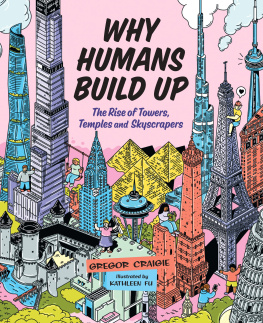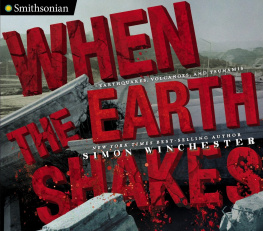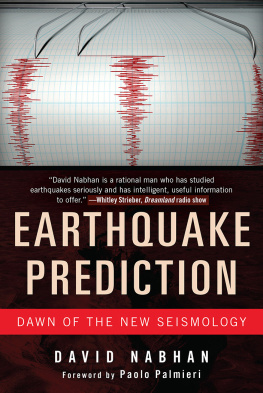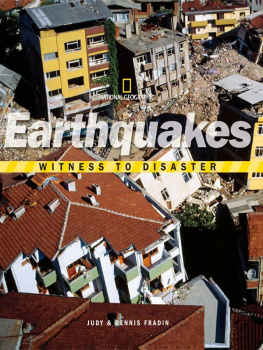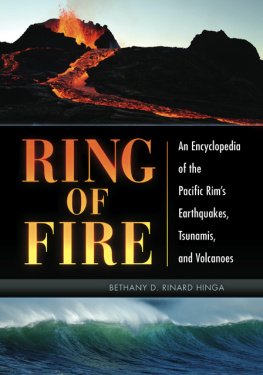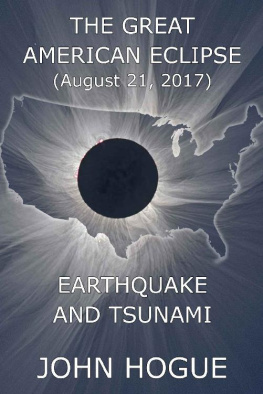Table of Contents
List of Pages
Landmarks

A vivid evocation of previous catastrophes, a definitive rendering of what, when, where, and how they have happened, and a clarion call to get ready for more of the same. Gregor Craigie has produced a passionate tour de force, beautifully written and sturdily built on countless interviews, eyewitness accounts, newspaper articles, scientific studies, and Indigenous oral histories. This book dances with detail and rings with authority.
KEN McGOOGAN, author of Dead Reckoning: The Untold Story of the Northwest Passage
Lucid and remorselessly researched, this book is both captivating and urgent. I am racing to geophysical maps to check the status of my local seismic zone, laying in emergency supplies, and warning loved ones to do the same.
ALANNA MITCHELL, author of The Spinning Magnet: The Force That Created the Modern World and Could Destroy It
On Borrowed Time takes us on a tour of North American earthquakes, from the West Coast to the Atlantic Ocean. Gregor Craigies well-written and comprehensive jewel provides us with an accurate understanding of earthquake science, while exploring our fears and perceptions about future large quakes.
JOHN CLAGUE, Emeritus Professor, Department of Earth Sciences, Simon Fraser University
On Borrowed Time is an impressive and timely reminder that large earthquakes can occur right across North America and that each passing day draws us closer to the inevitable next big one. But, as Craigie reminds us, earthquakes should not be anything to fear providing we prepare properly.
EDWIN NISSEN, Associate Professor/Canada Research Chair in Geophysics, University of Victoria
ON BORROWED TIME
North Americas Next Big Quake
by GREGOR CRAIGIE
Goose Lane Editions
Copyright 2021 by Gregor Craigie.
All rights reserved. No part of this work may be reproduced or used in any form or by any means, electronic or mechanical, including photocopying, recording, or any retrieval system, without the prior written permission of the publisher or a licence from the Canadian Copyright Licensing Agency (Access Copyright). To contact Access Copyright, visit accesscopyright.ca or call 1-800-893-5777.
Edited by Jill Ainsley.
Cover and page design by Julie Scriver.
Cover images: copyright varunyucg, 123rf.com (graphic); Pixabay (photograph).
Map by Marcel Morin, Lost Art Cartography.
Library and Archives Canada Cataloguing in Publication
Title: On borrowed time : North Americas next big quake / Gregor Craigie.
Names: Craigie, Gregor, author.
Description: Includes bibliographical references.
Identifiers: Canadiana (print) 20210183845 | Canadiana (ebook) 20210183861 | ISBN 9781773102061 (softcover) | ISBN 9781773102078 (EPUB)
Subjects: LCSH: Emergency managementCanada. | LCSH: Emergency managementUnited States. | LCSH: Natural disastersCanada. | LCSH: Natural disastersUnited States. | LCSH: Earthquake predictionCanada. | LCSH: Earthquake predictionUnited States.
Classification: LCC HV551.5.C3 C73 2021 | DDC 363.340971dc23
Goose Lane Editions acknowledges the generous support of the Government of Canada, the Canada Council for the Arts, and the Government of New Brunswick.
Goose Lane Editions
500 Beaverbrook Court, Suite 330
Fredericton, New Brunswick
CANADA E3B 5X4
gooselane.com
For my mother, Betty, and my sister, Gillian.
Contents

A Quick Word on Magnitude
The first thing most people ask after an earthquake is: how big was it? Earthquakes are difficult to quantify because there are different ways to measure them. Is it the actual force of the ground shaking under a city, or the overall energy expended in a quake? Although many people are familiar with the Richter scale, in this book I use the moment magnitude scale, which the Japanese seismologist Hiroo Kanamori and the American seismologist Thomas C. Hanks developed in the 1970s. The Richter scale and others, like the modified Mercalli intensity scale, work well for describing many seismic events, but the moment magnitude scale is better suited to measuring the worlds largest earthquakes.
Introduction CHRISTCHURCH AND WHAT IT MEANS FOR NORTH AMERICA
The quake struck in the noon hour, when many office workers in Christchurchs central business district were out looking for lunch. As earthquakes go, the February 2011 temblor was a relatively moderate magnitude-6.3 event, but that number hid the true terror. Accelerometers near the epicentre measured the peak ground acceleration at more than 2g, or twice the force of gravity. Thats roughly four times the peak ground force acceleration recorded in the devastating 2010 earthquake in Haiti and roughly twenty times stronger than the force a passenger in a typical commercial airliner might feel during takeoff. The strain on buildings was immense, akin to lifting a hotel or office tower up off the ground and slamming it back down. The peak ground acceleration measurements collected in Christchurch that day were some of the strongest ever recorded, both because the city was so close to the epicentre and because the quake itself was so close to the surface. While the shaking didnt last long, roughly ten seconds, it was severe. Ten seconds was time enough to tear New Zealands second-largest city apart.
Witnesses reported cars being thrown straight up into the air. The horizontal force was intense, but the vertical motion was even stronger. As stunned city residents would discover seconds later, it was simply too much for some buildings.
More than two hundred people were inside the six-storey Canterbury Television building at the time, which was a relatively modern structure built in the 1980s. The offices and studios of CTV occupied the ground and second floors, the third floor was empty, and different tenants filled the top three storeys, including Kings Education, an English-language school, on the fourth floor, a medical clinic on the fifth, and a counselling service on the sixth.
A few minutes before the shaking started, Kendyll Mitchell wrangled her two young children into the elevator. Her eleven-month-old daughter, Ditta, was strapped into a stroller, and her three-year-old son, Jett, was walking beside her. They stepped out of the elevator on the top floor, a few minutes early for a one oclock counselling appointment. An even larger earthquake had rocked New Zealands South Island five months earlier. Because it was centred forty kilometres west of the city, the shaking was less intense in Christchurch, but it had terrified Jett. Aftershock after aftershock shook the familys house like a freight train, and the little boy couldnt cope. Kendyll Mitchell was bringing him to see a counsellor for help that afternoon.
Down on the main floor, Maryanne Jackson sat alert at the CTV reception desk. Shed been worried about the building since the quake five months earlier. Although the building had been inspected afterwards, visible cracks later emerged in some walls, and Jackson was worried it might collapse if the ground shook again. Her colleagues had become accustomed to seeing her sprint outside whenever she felt an aftershock.
Up on the fourth floor, Tamara Cvetanova and five fellow students were eating lunch in the kitchen area of the Kings Education language school. The native of Serbia had been a pediatrician before moving to New Zealand a decade earlier and had enrolled at the school as part of her effort to recertify as a doctor in New Zealand.


